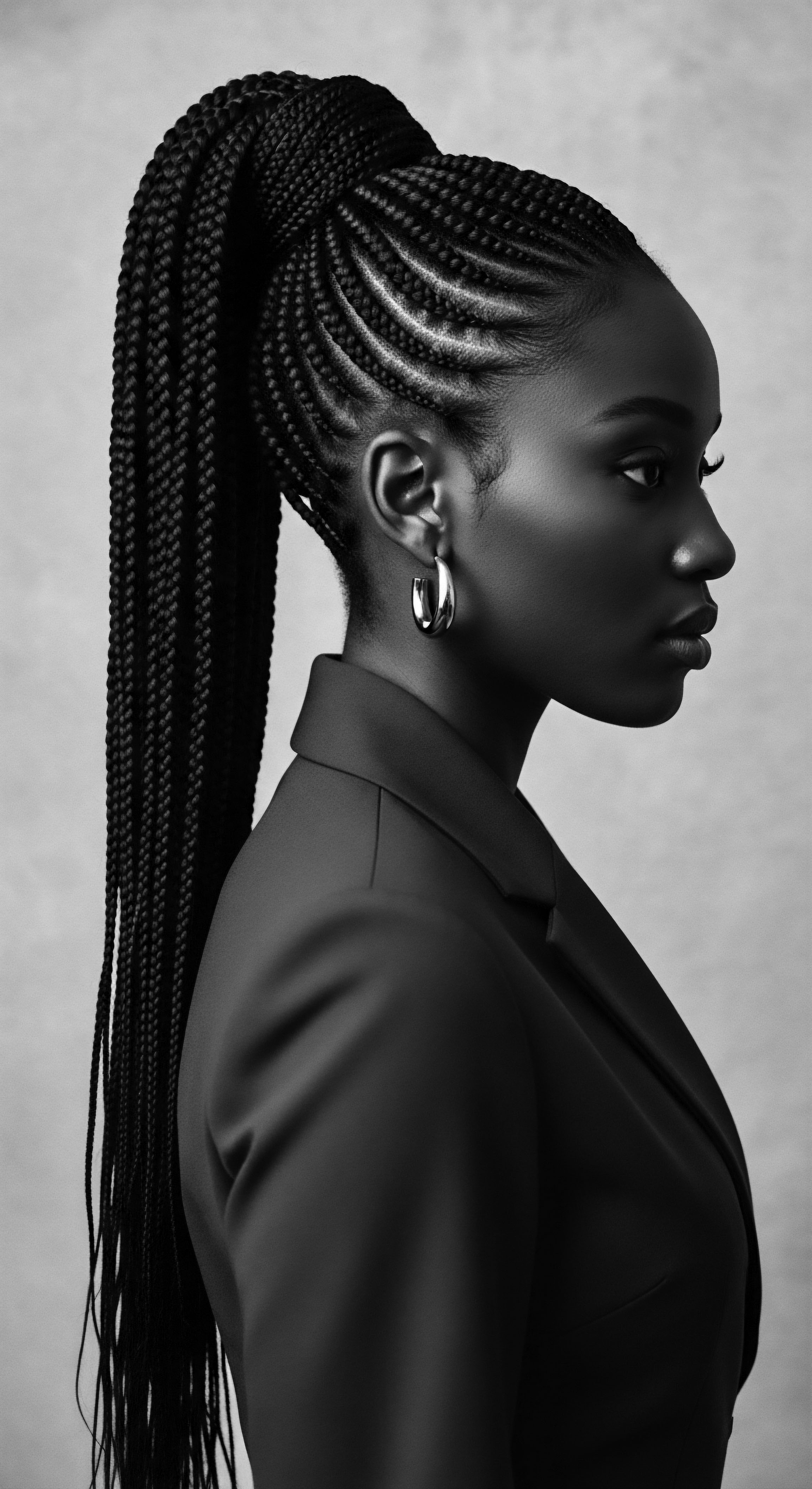
Roots
Consider for a moment the vibrant crown you carry, not merely as strands upon your head, but as a living scroll, penned by generations past. It holds whispers of ancient practices, the resonance of communal care, and the fortitude of a heritage that weathered profound upheaval. This exploration will trace how ancestral hair care rituals, those deep, resonant practices, continue to shape and define modern Textured Hair Identity. We seek to honor the wisdom held within each curl, coil, and wave, recognizing that true understanding extends beyond the visible and delves into the profound lineage of our hair.
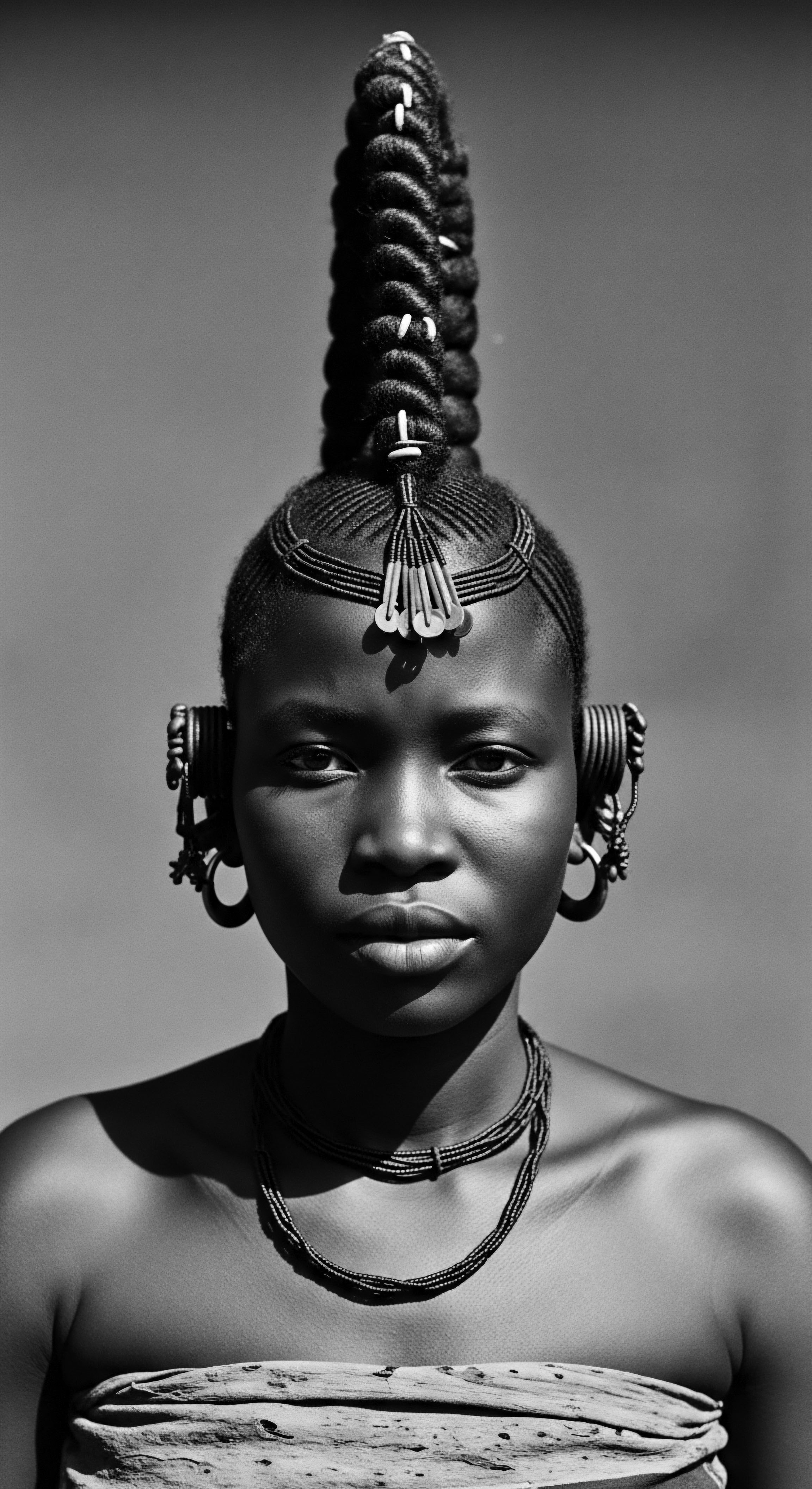
Anatomy’s Ancient Echoes
The very biology of textured hair, with its unique elliptical follicle shape and complex disulfide bonds, held profound significance for ancient African communities. They understood, with an intuitive wisdom that predates modern microscopy, how their hair behaved, how it responded to moisture, and what elements from the earth offered sustenance. This understanding wasn’t codified in scientific journals but lived in shared knowledge, passed from elder to child.
They recognized hair as a conduit to the divine, a marker of status, and a canvas for communication (Byrd & Tharps, 2001). The spiraling curls, far from being a challenge, were seen as an evolutionary brilliance, a natural air conditioning system in warm climates, as some researchers suggest.
Ancestral understanding of textured hair’s biology was rooted in deep observation, recognizing its unique properties and spiritual connections.
Hair classification, in those earliest times, spoke not of ‘types’ on a numerical chart, but of lineage, tribal affiliation, and life’s passages. A hairstyle could signal marital status, age, wealth, or readiness for certain ceremonies. The Karamo people of Nigeria, for instance, wore a shaved head with a single tuft of hair, a clear identifier of their group. This bespoke nomenclature, woven into the fabric of daily existence, transcended mere description; it was a societal language.

Hair’s First Lexicon
The foundational lexicon of textured hair arises from these ancient contexts. Terms for hair weren’t separate from terms for life, for community, for spirit. The act of cleansing, oiling, and shaping hair was intrinsically linked to well-being, to spiritual alignment, and to social standing. Traditional ingredients were selected for their observed properties ❉ Shea Butter for moisture, Coconut Oil for protection, aloe vera for soothing.
These natural remedies were not arbitrary choices; they represented a deep, empirical knowledge of local botany and its benefits for hair and scalp health. The continuity of these traditional ingredients into modern regimens speaks volumes about their efficacy, a testament to ancient observations now often validated by contemporary science, as seen in reviews of phytochemicals in hair care.
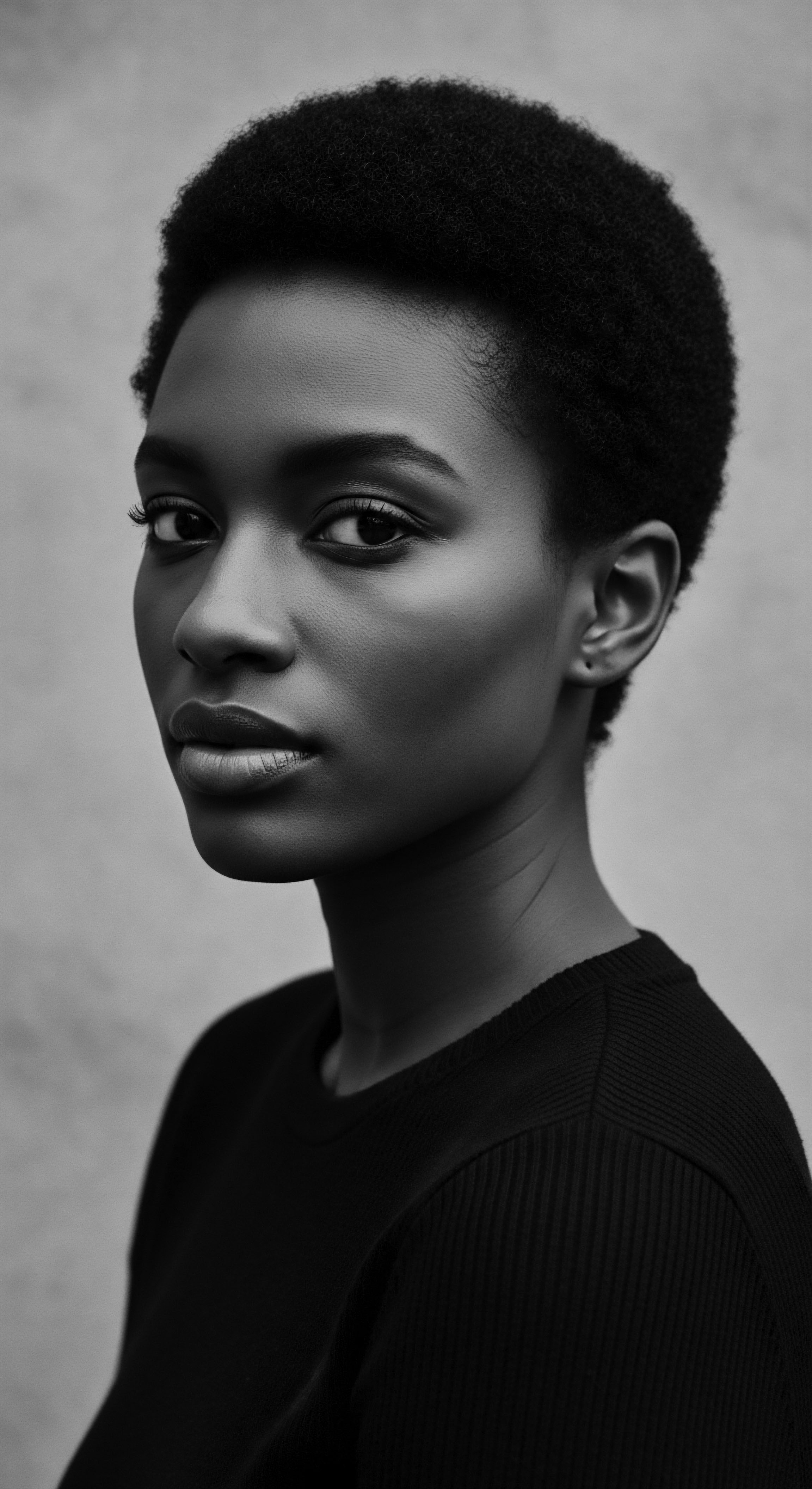
Cycles of Growth and Sustenance
The understanding of hair growth cycles in ancestral times may not have aligned with today’s anagen, catagen, and telogen phases, but it certainly connected to broader rhythms of nature and human existence. Hair was seen as a living part of the self, responding to diet, climate, and spiritual state. Rituals surrounding hair were often timed with specific life events—birth, initiation, marriage, mourning—acknowledging its constant renewal and its capacity to signify change.
For instance, the cutting of hair for mourning a loved one, with its ceremonious disposal, reflected a profound connection between the individual, their hair, and the earth. This holistic view recognized that external care was only one part of hair health; internal nourishment and spiritual harmony also played their roles.
| Ancient Cultural View Hair as a spiritual connection to the divine or ancestors. |
| Modern Scientific Parallel/Connection The holistic wellness movement recognizing mind-body connections in health. |
| Ancient Cultural View Hairstyles as markers of tribal affiliation, social status, and life events. |
| Modern Scientific Parallel/Connection Genomic diversity in hair characteristics reflecting population histories and migration. |
| Ancient Cultural View Use of specific natural ingredients for hair health. |
| Modern Scientific Parallel/Connection Phytochemical research validating the efficacy of traditional plant-based remedies. |
| Ancient Cultural View The enduring wisdom of ancestral hair care continues to illuminate our contemporary appreciation of textured hair heritage. |

Ritual
From the foundational understanding of hair, we move into the domain of ritual, where care transformed into ceremony, shaping both individual and communal lives. Ancestral hair care was never a solitary, rushed act; it was a deeply social, sometimes sacred, engagement. These rituals, whether simple daily oiling or elaborate ceremonial braiding, laid the groundwork for care practices that persist today, bearing the indelible mark of heritage. The hands that meticulously coiled, braided, and adorned hair were not simply styling; they were transmitting knowledge, reinforcing community bonds, and preserving identity across generations.
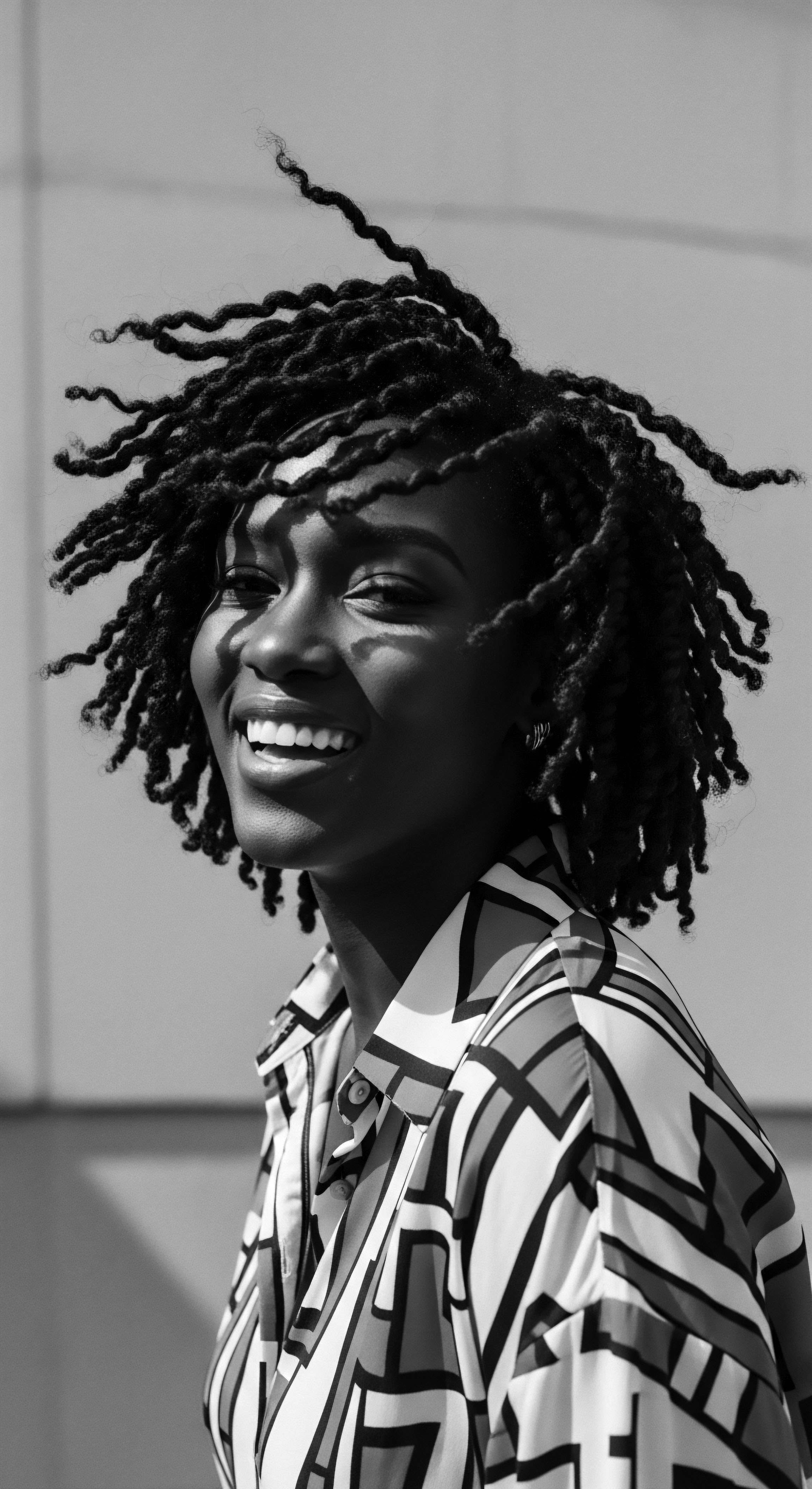
The Styling Legacy
The styling practices of African communities, deeply rooted in antiquity, were far more than aesthetic choices. They were protective strategies, designed to preserve the hair in diverse climates and through active lives. Braiding, for example, a practice tracing back to 3500 BCE in Africa, served myriad purposes. Patterns could indicate a person’s age, marital status, or wealth.
During the transatlantic slave trade, braids became a covert language, some intricate cornrow patterns reputedly mapping escape routes or hiding seeds for survival. This remarkable ingenuity underscores hair as a site of resilience and cultural preservation amidst profound oppression.

Traditional Tools and Techniques
The tools of ancestral hair care were extensions of the hands that wielded them, often crafted from natural materials. Combs were carved, often with symbols that identified tribal or personal identity, but were systematically removed during enslavement. The absence of these tools forced immense adaptability, as enslaved Africans devised new methods with what was available, sometimes using surprising items like bacon grease or kerosene as make-do conditioners. Despite these immense challenges, the techniques themselves—twisting, coiling, threading, braiding—persisted, evidence of a tenacious spirit to maintain cultural connection.
- Irun Kiko ❉ An ancient Yoruba practice of hair threading, noted as early as the 15th century, using flexible wool, cotton, or rubber threads to create three-dimensional patterns.
- Oiling Ceremonies ❉ Regular application of natural butters and oils, often infused with herbs, for moisture retention and scalp health, reflecting a continuity of care from ancient times to today.
- Communal Braiding ❉ A social ritual where family and community members gathered for hours, strengthening bonds while preserving traditional styles and knowledge, a practice that continues to hold meaning.

Protective Styles, Enduring Purpose
Protective styles, a cornerstone of modern textured hair care, have deep ancestral roots. Styles like Bantu Knots, originating from the Bantu people, symbolize pride and are worn during rites of passage. Cornrows, as mentioned, are not just aesthetically significant but served as vital communication tools for enslaved individuals.
These styles encapsulate a heritage of adapting to circumstances while maintaining cultural integrity. The enduring popularity of these historical styles in contemporary contexts is a testament to their functional benefits for hair health and their profound cultural resonance.
Ancestral hair practices, from precise styling to the communal act of braiding, were profound expressions of identity and a silent language of survival.
Consider the historical example of the Tignon Laws in Louisiana in the late 18th century. Free Black women were mandated by law to cover their hair with a tignon, a scarf or wrap, as a means of distinguishing them from white women and signifying a lower social status. Far from being subjugated, these women transformed the tignon into a powerful statement of style and defiance. They adorned their wraps with luxurious fabrics, jewels, and elaborate arrangements, turning an instrument of oppression into an expression of their inherent grace and resilience.
This act, transforming a forced regulation into a fashion statement, speaks to the dynamic interaction between control and self-expression, underscoring how cultural heritage can subvert attempts at erasure. It is a powerful illustration of how external pressures can inadvertently strengthen cultural identity, making hair an enduring symbol of resistance.
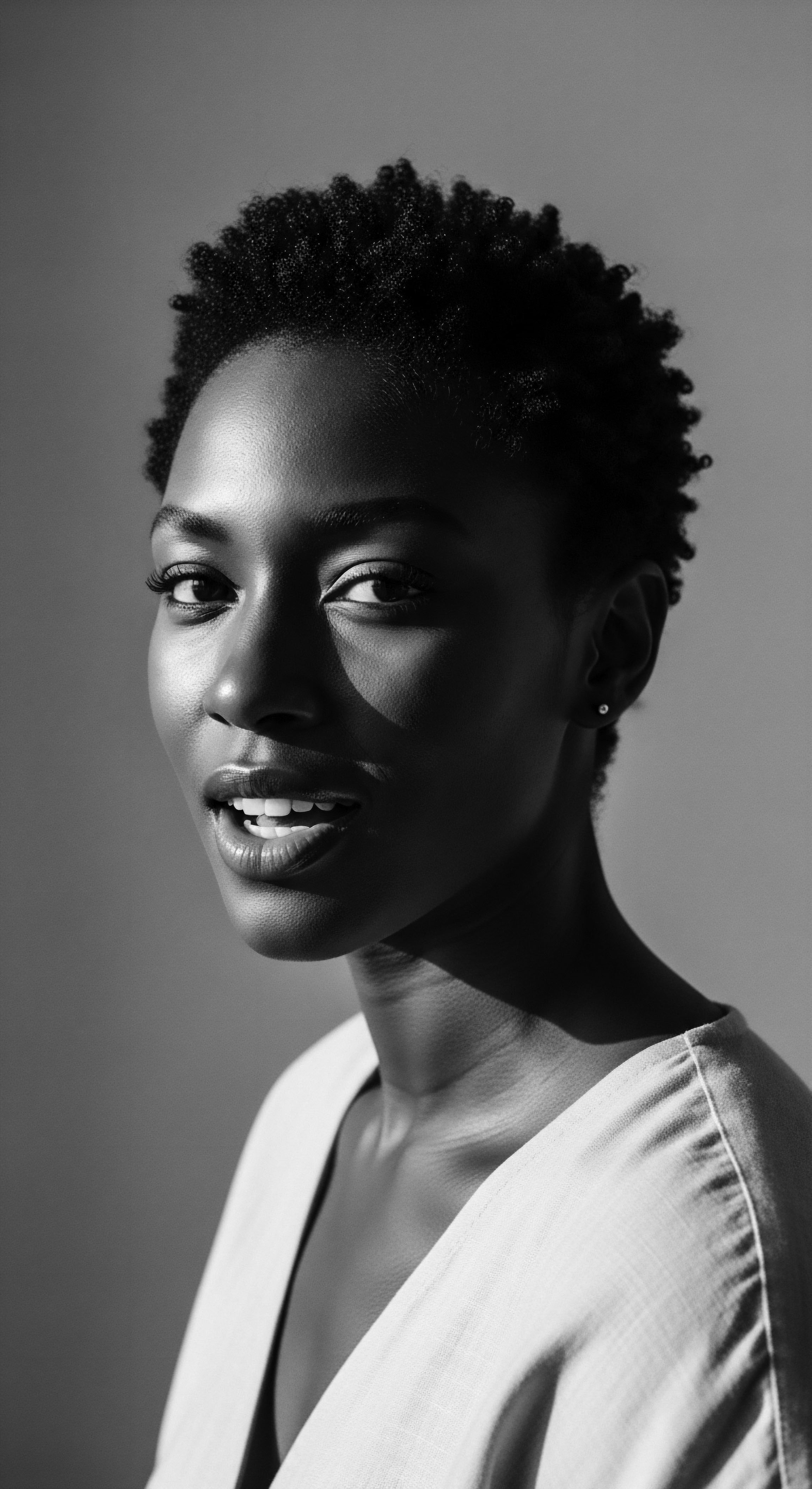
Relay
The ancestral rituals and the deep understanding of hair did not simply cease with the advent of modernity; they have been relayed through generations, adapting and transforming, yet retaining their core wisdom. This continuous current from past to present defines how ancestral hair care rituals influence modern Textured Hair Identity. This influence is not linear; rather, it manifests as a complex interplay between historical memory, socio-political movements, scientific validation, and personal reclamation.

Echoes in Modern Identity
The self-perception of modern textured hair identity is profoundly shaped by this historical relay. The forced shaving of heads during the transatlantic slave trade aimed to strip Africans of their identity, their connection to their heritage, and their very humanity. This dehumanization, coupled with the imposition of Eurocentric beauty standards that deemed coiled hair “woolly” and “inferior,” cultivated internalized negative perceptions that persist even today. The historical pressure to straighten hair, a pathway to perceived social acceptance or better treatment on plantations, speaks to the immense societal weight placed upon hair texture.

Reclamation’s Resurgence
The mid-20th century, particularly the 1960s and 1970s, witnessed a powerful resurgence of natural hairstyles, exemplified by the Afro. This was not merely a stylistic choice; it was a profound political statement, a symbol of Black pride, self-acceptance, and resistance against assimilation during the Civil Rights and Black Power movements. The Afro became a visual declaration that “Black is Beautiful,” challenging imposed beauty norms and realigning identity with African roots.
This movement directly relayed the ancestral understanding of hair as a marker of identity and communal strength into a contemporary context, empowering individuals to reclaim their inherent beauty. The CROWN Act in recent times, banning discrimination against natural hair, stands as a modern legislative echo of this historical struggle and reclamation.
Modern textured hair identity is a vibrant testament to ancestral resilience, carrying forward historical pride and resistance through contemporary styles.

Science and Sacredness Converge
Modern science often provides empirical validation for practices long held as traditional wisdom. The hydrating and protective qualities of natural oils and butters, used for centuries in African communities, are now understood through the lens of lipid chemistry and hair shaft integrity. The benefits of protective styling in reducing breakage and environmental damage, a core ancestral principle, are confirmed by dermatological understanding of textured hair’s unique structure and vulnerability. This convergence allows for a deeper appreciation of ancestral knowledge, demonstrating that “traditional” does not signify “unscientific,” but often “empirically proven through generations of observation.”
- Shea Butter’s Sustenance ❉ Long prized across West Africa, its rich emollients coat the hair shaft, providing superior moisture and protection, now understood through its complex fatty acid profile.
- African Black Soap’s Cleanse ❉ A traditional cleanser, its gentle yet effective action on the scalp and hair promotes cleanliness without stripping natural oils, a balance modern formulations strive for.
- Cowrie Shell Adornments ❉ Beyond their beauty, these shells, often incorporated into ancient hairstyles, carried symbolic meanings of fertility, prosperity, and spiritual connection, linking adornment to deeper heritage.
The transmission of ancestral wisdom also happens through less formal channels ❉ the communal hair salons and barbershops that arose in the diaspora. These spaces, historically and contemporarily, serve as more than just places for grooming; they are cultural hubs where stories are shared, traditions are passed down, and collective identity is affirmed. The act of getting one’s hair done becomes a living history lesson, a sensory experience that grounds modern identity in a tangible heritage.
| Historical Context Pre-colonial Africa |
| Hair Practice/Symbolism Hairstyles communicate status, tribe, spirituality. |
| Influence on Modern Identity Reclamation of cultural pride through traditional styles (e.g. Fulani braids, Bantu knots). |
| Historical Context Transatlantic Slave Trade |
| Hair Practice/Symbolism Forced shaving; cornrows as secret maps/resistance. |
| Influence on Modern Identity Hair as a symbol of resilience; rejection of imposed beauty standards. |
| Historical Context 18th Century Tignon Laws |
| Hair Practice/Symbolism Headwraps mandated, then transformed into adornment. |
| Influence on Modern Identity Headwraps as fashion statements and symbols of dignity. |
| Historical Context Civil Rights/Black Power Movements |
| Hair Practice/Symbolism The Afro as a symbol of pride and protest. |
| Influence on Modern Identity The natural hair movement; self-acceptance of textured hair. |
| Historical Context The continuous adaptation and re-interpretation of hair practices demonstrate the enduring spirit of textured hair heritage. |

How do Cultural Narratives Reinforce Hair Identity?
The narratives surrounding hair—stories of beauty, struggle, creativity, and spiritual connection—are instrumental in reinforcing identity. From the oral histories of community elders to contemporary literature and film, these narratives articulate the deeply personal and collective meanings ascribed to textured hair. When individuals hear stories of ancestors who used their hair to communicate, or who defied oppressive laws by transforming head coverings into statements of elegance, it provides a powerful historical context for their own hair journeys.
These narratives transform hair from a mere physical attribute into a vessel of cultural memory, a living archive of resilience and self-definition. They instill a sense of pride and belonging, encouraging individuals to see their hair not as something to be managed or conformed, but as a cherished inheritance.

How does Science Confirm Ancestral Hair Wisdom?
Modern scientific understanding provides a framework for explaining the “why” behind many ancestral hair practices. For example, the use of plant-based oils and butters for moisture and protection, a practice central to traditional African hair care, is now supported by scientific studies on lipid composition and its effects on hair fiber. The inherent challenges of coiled hair, such as susceptibility to dryness and breakage due to its unique structure and cuticle arrangement, are issues ancestral practices addressed through conditioning and protective styling.
When ancient remedies are explored through a contemporary scientific lens, we often find that the efficacy observed over millennia aligns with modern biochemical principles. This cross-validation strengthens the authority of ancestral wisdom, bridging the apparent divide between tradition and scientific inquiry.

Reflection
The journey through ancestral hair care rituals and their profound influence on modern Textured Hair Identity reveals a story far richer than surface appearance might suggest. It is a testament to the enduring power of heritage, a deep current flowing from ancient African lands, through the crucible of diaspora, into the vibrant present. Every braid, every coil, every meticulously chosen ingredient carries the resonant echo of hands that cared, spirits that resisted, and communities that found solace and strength in shared practices.
We stand at a unique juncture where historical memory, cultural pride, and scientific insight converge. The ‘Soul of a Strand’ ethos invites us to perceive our hair not just as a part of our physical being, but as a living archive, a continuous narrative of resilience, innovation, and beauty. Understanding this lineage empowers us to choose practices that honor our unique textured hair, not as a trend, but as an act of profound self-acceptance and a vibrant connection to a legacy that persists, adapts, and inspires. The ancestral roots of care continue to nourish the modern crown, shaping not only how we care for our hair, but fundamentally, how we perceive ourselves and our place within a continuing human story.
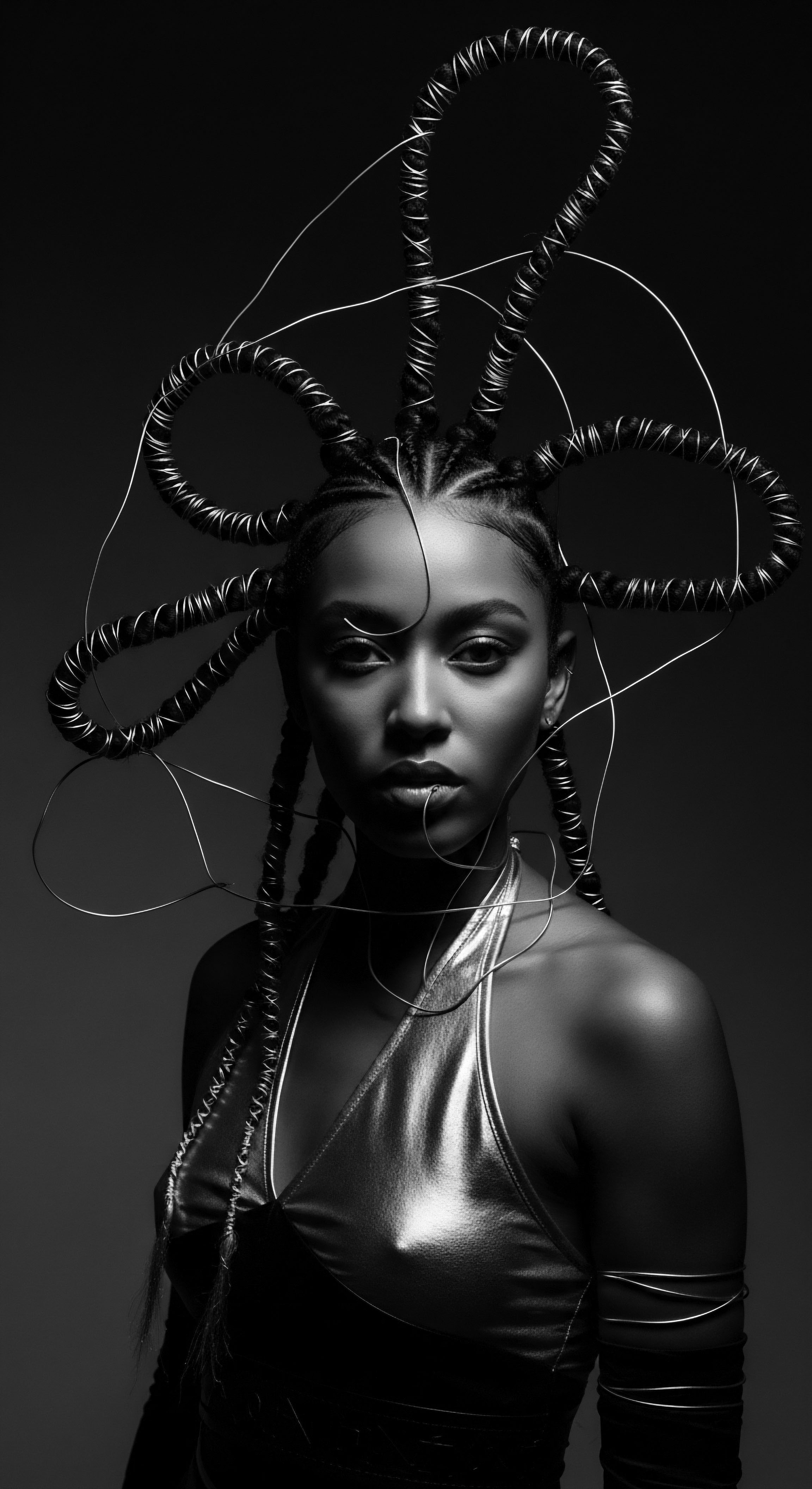
References
- Byrd, A. & Tharps, L. (2001). Hair Story ❉ Untangling the Roots of Black Hair in America. St. Martin’s Press.
- Dabiri, E. (2020). Twisted ❉ The Tangled History of Black Hair Culture. HarperCollins.
- Essel, G. (2023). Cornrow ❉ A Medium for Communicating Escape Strategies during the Transatlantic Slave Trade Era ❉ Evidences from Elmina Castle and Centre for National Culture in Kumasi. Academic Journal of History and Culture, 1(1), 1-10.
- Johnson, K. A. & Bankhead, T. J. (2014). Hair Story ❉ Untangling the Roots of Black Hair in America, updated edition. St. Martin’s Press.
- Rosado, S. (2003). The Grammars of Hair. In A. D. Byrd & L. L. Tharps, Hair Story ❉ Untangling the Roots of Black Hair in America. St. Martin’s Press.
- Sieber, R. & Herreman, M. (2000). Hair in African Art and Culture. Museum for African Art.
- Omotoso, S. A. (2018). Gender and Hair Politics ❉ An African Philosophical Analysis. Journal of Pan African Studies, 11(8), 26-40.
- Wood, M. & Leyden, M. (n.d.). Chemistry of Wellness ❉ Hair and Hair Care. UVA ChemSciComm.
- Hexis Lab. (n.d.). Genomic Variation in Textured Hair ❉ Implications for Holistic Hair Care.
- Kolekar, Y. S. Tamboli, F. A. More, H. N. Mulani, S. A. & Mali, N. P. (2021). Medicinal plants used in cosmetics for skin and hair care ❉ International Journal of Pharmaceutical Chemistry and Analysis, 8(2), 36–40.
